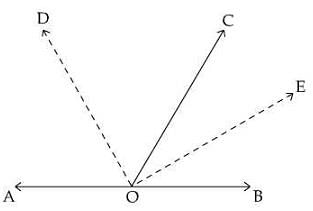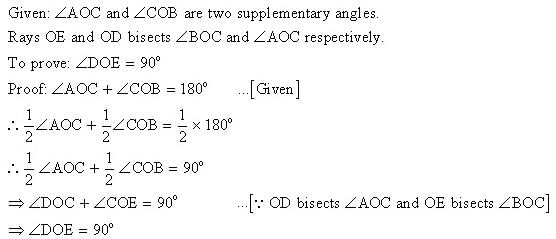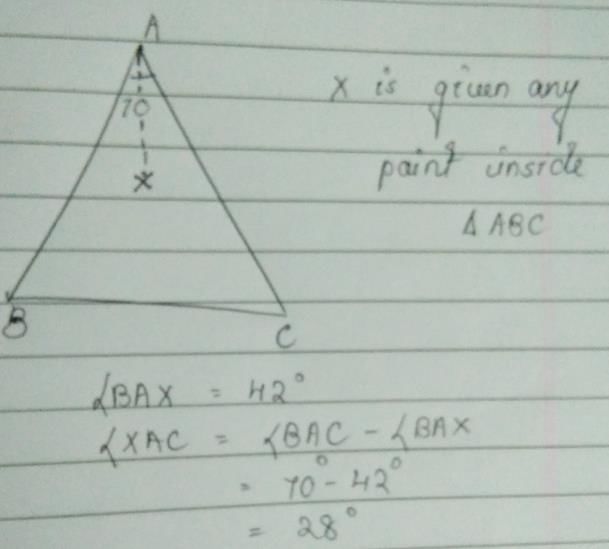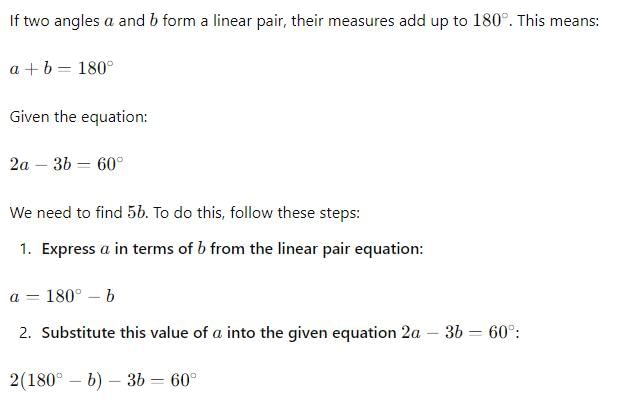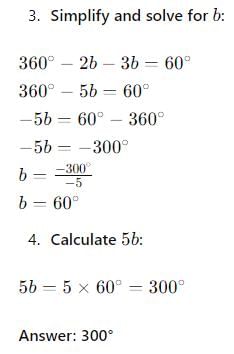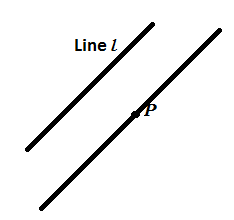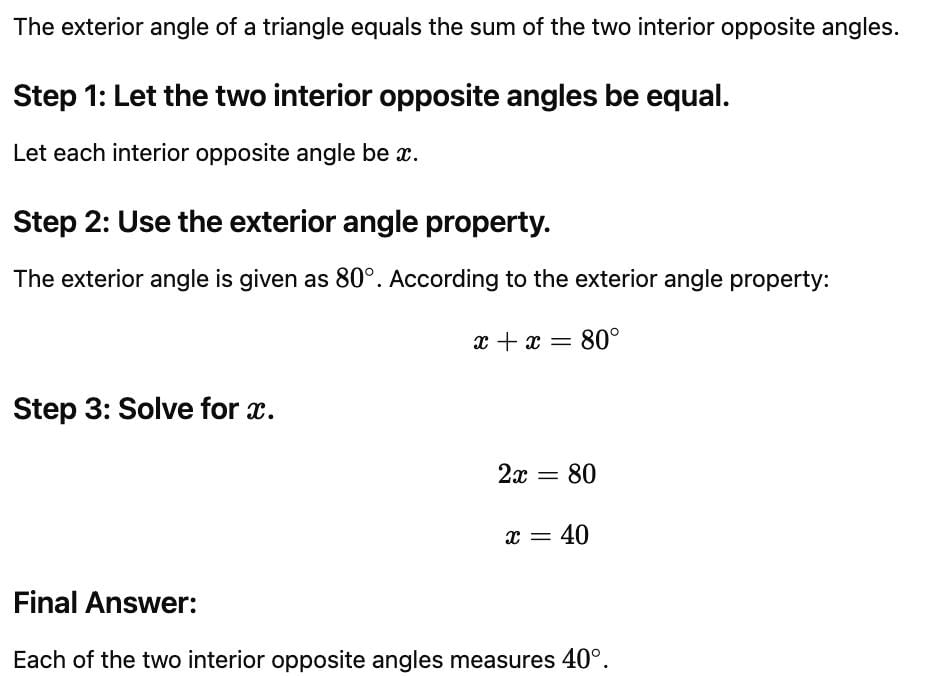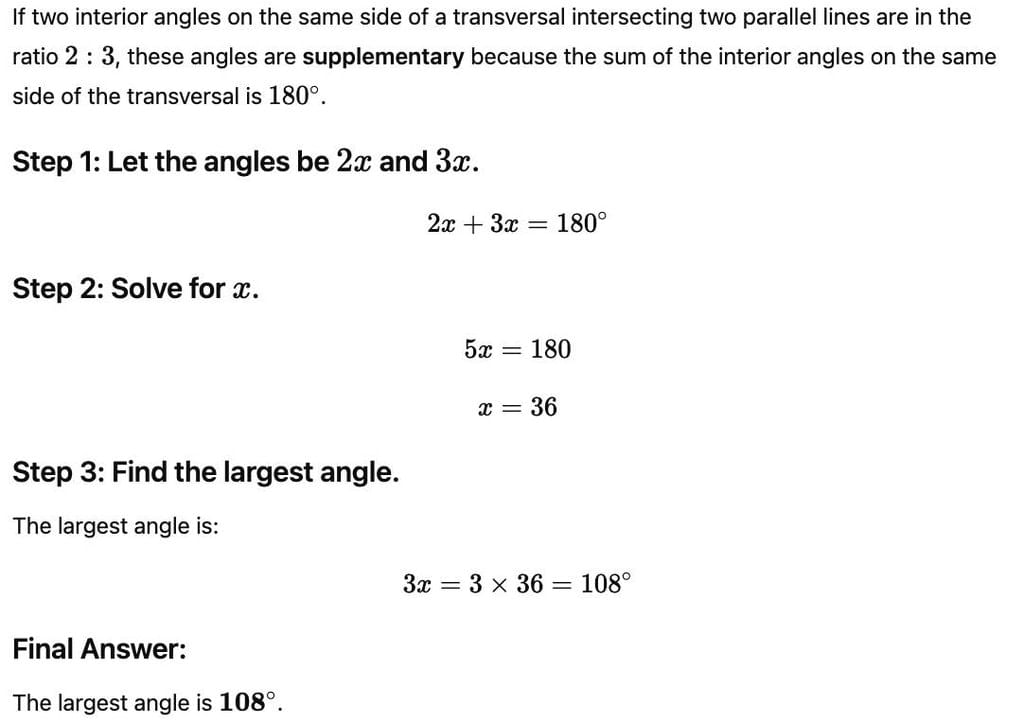Test: Lines And Angles- 1 - GRE MCQ
25 Questions MCQ Test - Test: Lines And Angles- 1
If the supplement of an angle is three times its complement, then angle is:
Which of the following is true?
(i) A triangle can have two right angles.
(ii) A triangle can have all angles less than 60°.
(iii) A triangle can have two acute angles.
(i) A triangle can have two right angles.
(ii) A triangle can have all angles less than 60°.
(iii) A triangle can have two acute angles.
The angle between the bisectors of two adjacent supplementary angles is :
Which of the following is true?
(i) A triangle can have two obtuse angles.
(ii) A triangle can have all angles equal to 60°.
(iii) A triangle can have all angles more than 60°.
If two parallel lines are cut by a transversal, then the pairs of ___________ angles are congruent.
If two angles are complementary of each other, then each angle is :
X lies in the interior of ∠BAC. If ∠BAC = 70° and ∠BAX = 42° then ∠XAC =?

An angle is 14° more than its complementary angle, then angle is :
In the given figure, straight lines PQ and RS intersect at O. If the magnitude of θ is 3 times that of ϕ, then (∠ϕ) is equal to :
How many degrees are there in an angle which equals one-fifth of its supplement?
Two angles whose measures are a & b are such that 2a - 3b = 60° then 5b = ?, if they form a linear pair:
If two parallel lines are intersected by a transversal then the bisectors of the interior angles form a :
If one angle of triangle is equal to the sum of the other two angles then triangle is :
If the arms of one angle are respectively parallel to the arms of another angle, then the two angles are :
If l is any given line and P is any point not lying on l, then the number of parallel lines that can be drawn through P, parallel to l would be :
There are four lines in a plane no two of which are parallel. The maximum number of points in which they can intersect is :
An exterior angle of a triangle is 80° and two interior opposite angles are equal. Measure of each of these angles is :
The angle which is equal to 8 times its complement is :
If two supplementary angles are in the4 ratio 2 : 7, then the angles are :
In the given figure, the value of x which makes POQ a straight line is :
If two interior angles on the same side of a transversal intersecting two parallel lines are in the ratio 2 : 3, then the largest of two angles is :



